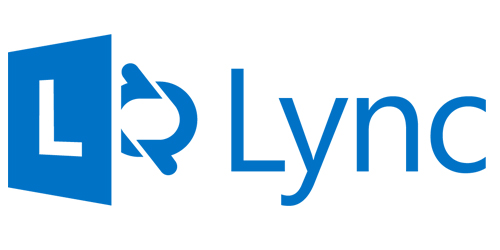Author Archives: networkingnerd
Author Archives: networkingnerd
The IT world is cyclical for sure. I’ve seen trends and topics repeating themselves over and over again in my relatively short time here. I find it interesting that we keep solving similar problems over and over again. I also find it fascinating that this particular issue leads to the reason why blogs are so important.
Questions abound in IT. It’s the nature of the industry. However, it’s not just new questions that we create when technology leaps past us. We keep asking the same questions over and over again. This is the field of study that created the FAQ, remember?
In recent memory, I find the same questions being asked over and over again:
You’ve probably asked those very same questions. Perhaps you found the answers you were looking for. Perhaps you’re still trying to figure it out. The problem is that those questions are still being asked. The industry should have evolved to the point where the simple questions have been answered with simple answers. Complex questions, or those questions that need more in-depth Continue reading
An article came out this week that really made me sigh. The title was “Six Aging Protocols That Could Cripple The Internet“. I dove right in, expecting to see how things like Finger were old and needed to be disabled and removed. Imagine my surprise when I saw things like BGP4 and SMTP on the list. I really tried not to smack my own forehead as I flipped through the slideshow of how the foundation of the Internet is old and is at risk of meltdown.
If It Ain’t Broke
Engineers love the old adage “If it ain’t broke, don’t fix it!”. We spend our careers planning and implementing. We also spend a lot of time not touching things afterwards in order to prevent it from collapsing in a big heap. Once something is put in place, it tends to stay that way until something necessitates a change.
BGP is a perfect example. The basics of BGP remain largely the same from when it was first implemented years ago. BGP4 has been in use since 1994 even though RFC 4271 didn’t officially formalize it until 2006. It remains a critical part of how the Continue reading

Gallons of virtual ink have been committed to virtual paper in the last few days with regards to Cisco’s lawsuit against Arista Networks. Some of it is speculating on the posturing by both companies. Other writers talk about the old market vs. the new market. Still others look at SDN as a driver.
I didn’t just want to talk about the lawsuit. Given that Arista has marketed EOS as a “better IOS than IOS” for a while now, I figured Cisco finally decided to bite back. They are fiercely protective of IOS and they have to be because of the way the trademark laws in the US work. If you don’t go after people that infringe you lose your standing to do so and invite others to do it as well. Is Cisco’s timing suspect? One does have to wonder. Is this about knocking out a competitor? It’s tough to say. But one thing is sure to me. Cisco has effectively killed the command line interface (CLI).
“Industry Standards”
EOS is certainly IOS-like. While it does introduce some unique features (see the NFD3 video here), the command syntax is very much IOS. That is purposeful. There are two Continue reading

Whitebox switching has moved past the realm of original device manufacturers and has been taken up by traditional networking vendors. Andre Kindness (@AndreKindness) of Forrester recently posted that he fields several calls from his customers every day asking about a particular vendor’s approach to whitebox switching. But what do these vendor offerings look like? And can we predict how a given vendor will address the whitebox market?
Chocolate In My Peanut Butter
Dell was one of the first traditional networking vendors to announce a whitebox switch offering that decoupled the operating system from the switching hardware. Dell offered packages from Cumulus Linux and Big Switch Networks alongside their PowerConnect lineup. This makes sense when you consider that the operating system on the switch has never been the strong suit of Dell. The PowerConnect OS is not very popular with network engineers, being very dissimilar from more popular CLIs such as Cisco IOS and its look-alikes. Their attempts to capitalize on the popularity of Force Ten OS (FTOS) and adapt it or use on PowerConnect switches has been difficult at best, due to the divide been hardware architecture of the two platforms.
What Dell is very good at is Continue reading
HP has quietly been making waves recently with their networking strategies. They recently showed off their technology around software defined networking (SDN) applications at Interop New York. Here’s a video:
It would seem that HP has been doing a lot of hard work on the back end with SDN. So why haven’t we heard about it?
Trumpet and Bugle
HP Networking hasn’t been in the news as much as Cisco and VMware as of late. When you consider that both of those companies are pushing agendas related to redefining the paradigm of networking around policy and virtualization their trumpeting of those agendas makes total sense. But even members of the League of Non-Aligned Vendors like Brocade are talking a lot about their SDN strategy with the Vyatta Controller and OpenStack integrations. Vendors have layers and layers of plans for the “new” networking. But HP has actually been doing it! Why haven’t we known until now?
HP has been content to play the role of the bugler to the trumpeters of the bigger organizations. Rather than talking over and over again about what they are planning on doing, HP waits until they’ve actually done it to talk Continue reading
Software Defined Networking has changed the way that organizations think about their network infrastructure. Companies are looking at increasing automation of mundane tasks, orchestration of policy, and even using white box switches with the help of new unbound operating systems. A new class of technologies that is coming to market hopes to reduce complexity and cost for the Achilles Heel of many enterprises: the Wide Area Network (WAN).
Do You WANt To Build A Snowman?
The WAN has always been a sore spot for enterprise networks. It’s necessary to connect your organization to the world. If you have remote sites or branch locations, it is critical for daily operations. If you have an e-commerce footprint your WAN connection needs to be able to handle the generated traffic. But good WAN connectivity costs money. Lots of money.
WAN protocols are constantly being refined to come up with the fastest possible transmission and the highest possible uptime. Frame Relay, Asynchronous Transfer Mode (ATM) and Multi-Protocol Label Switching (MPLS) are a succession of technologies that have shaped enterprise WAN connectivity for over a decade. They have their strengths and weaknesses. But it is difficult to build an enterprise WAN Continue reading

Last week I went to go talk to a group of vocational students about networking. While I was there, I needed to send a couple of emails. I prefer to write emails from my laptop, so I pulled it out of my bag between talks and did the first thing that came to mind: I asked for the wireless SSID and password. Afterwards, I started thinking about how far we’ve come with connectivity.
I can still remember working with a wireless card back in 2001 trying to get the drivers to play nice with Windows 2000. Now, wireless cards are the rule and wired ports are the exception. My primary laptop needs a dongle to have a wired port. My new Mac Mini is happily churning along halfway across the room connected to my network as a server over wireless. It would appear that the user edge quietly became wireless and no tears were shed for the wire.
It’s also funny that a lot of the big security features like 802.1x and port security became less and less of an issue once open ports started disappearing in common areas. 802.1x for wired connections is barely even talked about Continue reading

The President recently released a video and statement urging the Federal Communications Commission (FCC) to support net neutrality and ensure that there will be no “pay for play” access to websites or punishment for sites that compete against a provider’s interests. I wholeheartedly support the idea of net neutrality. However, I do like to stand on my Devil’s Advocate soapbox every once in a while. Today, I want to show you why a truly neutral Internet may not be in our best interests.
Lawful Neutral
If the FCC mandates a law that the Internet must remain neutral, it will mean that all traffic must be treated equally. That’s good, right? It means that a provider can’t slow my Netflix stream or make their own webmail service load faster than Google or Yahoo. It also means that the provider can’t legally prioritize packets either.
Think about that for a moment. We, as network and voice engineers, have spent many an hour configuring our networks to be as unfair as possible. Low-latency queues for voice traffic. Weighted fair queues for video and critical applications. Scavenger traffic classes and VLANs for file sharers and other undesirable bulk noise. These plans take weeks to Continue reading
I spent a bit of my career on the phone doing support for a national computer vendor. In addition to the difficulties of walking people through opening the case and diagnosing motherboard issues, I found myself needing to overcome language barriers. While I only have a hint of an accent (or so I’ve been told), spelling out acronyms was a challenge. That’s where the phonetic alphabet comes into play
By now, almost everyone uses the NATO phonetic alphabet. It’s the most recognized in the world. The US joint Army/Navy version varies a bit but does have a lot of similarities. However, when I first started out using the NATO version quite a few callers didn’t know what Lima was or giggled when I said Tango.
I decided that some people have much more familiarity with first names. This was borne out when I kept using Mary for “M” instead of Mike. People immediately knew it. Same for Victor, Peter, and so on. So I cobbled together my own Name Phonetic Alphabet.
A – Adam
B – Barbara
C – Charlie
D – David
E – Edward
F – Frank
G – George
H – Harold
I Continue reading

Last week, Twitter confirmed that they will start injecting tweets from users you don’t follow into your timeline. The collective cry from their user base ranged from outrage to a solid “meh”. It seems that Twitter has stumbled onto the magic formula that Facebook has perfected: create a feature the users don’t care about and force it onto them. Why?
Twitter Doesn’t Care About Power Users
Twitter has an interesting mix of users. They reported earlier this year that 44% of their user base has never tweeted. That’s a lot of accounts that were created for the purpose of reserving a name or following people in read-only mode. That must concern Twitter. Because people that don’t tweet can’t be measure for things like advertising. They won’t push the message of a sponsored tweet. They won’t add their voice to the din. But what about those users that tweet regularly?
Power users are those that tweet frequently without a large follower base. Essentially, everyone that isn’t a celebrity with a million followers or a non-tweeting account. You know, the real users on Twitter. The people that make typos in their tweets and actually check to see who follows them. The ones Continue reading
It seems as though the entire tech world is splitting up. HP announced they are splitting the Personal Systems Group into HP, Inc and the rest of the Enterprise group in HP Enterprise. Symantec is forming Veritas into a separate company as it focuses on security and leaves the backup and storage pieces to the new group. IBM completed the sale of their x86 server business to Lenovo. There are calls for EMC and Cisco to split as well. It’s like the entire tech world is breaking up right before the prom.
Acquisition Fever
The Great Tech Reaving is a logical conclusion to the acquisition rush that has been going on throughout the industry for the past few years. Companies have been amassing smaller companies like trading cards. Some of the acquisitions have been strategic. Buying a company that focuses on a line of work similar to the one you are working on makes a lot of sense. For instance, EMC buying XtremIO to help bolster flash storage.
Other acquisitions look a bit strange. Cisco buying Flip Video. Yahoo buying Tumblr. There’s always talk around these left field mergers. Is the CEO Continue reading
Everywhere you turn, people are talking about software defined networking. The influence can be felt in every facet of the industry. Major players are trying to come to grips with the shift in power. Small vendors are ramping up around ideas and looking to the future. Professionals are simultaneously excited for change and fearful of upsetting the status quo. But will all of these things happen overnight?
Not Built In A Day, But Laying Bricks Every Hour
The truth of SDN is that it’s going to take some time for all the pieces to fall into place. Take a look at the recent Apple Pay launch. Inside of a week, it has risen to become a very significant part of the mobile payment industry, even if the installed base of users is exclusive to iPhone [6,6+] owners. But did this revolution happen in the span of a couple of days?
Apple Pay works because Apple spent months, if not years, designing the best way to provide transactions from a phone. It leverages TouchID for security, a concept introduced last year. It uses Near Field Communication (NFC) readers, which have been in place for a couple of Continue reading
K-12 schools face unique challenges with their IT infrastructure. Their user base needs access to a large amount of information while at the same time facing restrictions. While it does sound like some corporate network policies, the restrictions in the education environment are legal in nature. Schools must find new ways to provide the assurance of restricting content without destroying their network in the process. Which lead me to ask: Can SDN Help?
Online Protection
The government E-Rate program gives schools money each year under Priority 1 funding for Internet access. Indeed, the whole point of the E-Rate program is to get schools connected to the Internet. But we all know the Internet comes with a bevy of distractions. Many of those distractions are graphic in nature and must be eliminated in a school. Because it’s the law.
The Children’s Internet Protection Act (CIPA) mandates that schools and libraries receiving E-Rate funding for high speed broadband Internet connections must filter those connections to remove questionable content. Otherwise they risk losing funding for all E-Rate services. That makes content filters very popular devices in schools, even if they aren’t funded by E-Rate (which they aren’t).
Content filters Continue reading

The key to showing the promise of SDN is to find a real-world application to showcase capabilities. I recently wrote about using SDN to slice education networks. But this is just one idea. When it comes to real promise, you have to shelve the approach and trot out a name. People have to know that SDN will help them fix something on their network or optimize an troublesome program. And it appears that application is Microsoft Lync.
MIssing Lync
Microsoft Lync (neè Microsoft Office Communicator) is a software application designed to facilitate communications. It includes voice calling capability, instant messaging, and collaboration tools. The voice part is particularly appealing to small businesses. With a Microsoft Office 365 for Business subscription, you gain access to Lync. That means introducing a voice soft client to your users. And if it’s available, people are going to use it.
As a former voice engineer, I can tell you that soft clients are a bit of a pain to configure. They have their own way of doing things. Especially when Quality of Service (QoS) is involved. In the past, tagging soft client voice packets with Cisco Jabber required setting cluster-wide parameters for all clients. It Continue reading

A chance dinner conversation at Wireless Field Day 7 with George Stefanick (@WirelesssGuru) and Stewart Goumans (@WirelessStew) made me think about the implications of IPv6 in healthcare. IPv6 adoption hasn’t been very widespread, thanks in part to the large number of embedded devices that have basic connectivity. Basic in this case means “connected with an IPv4 address”. But that address can lead to some complications if you aren’t careful.
In a hospital environment, the units that handle medicine dosing are connected to the network. This allows the staff to program them to properly dispense medications to patients. Given an IP address in a room, staff can ensure that a patient is getting just the right amount of painkillers and not an overdose. Ensuring a device gets the same IP each time is critical to making this process work. According to George, he has recommended that the staff stop using DHCP to automatically assign addresses and instead move to static IP configuration to ensure there isn’t a situation where a patient inadvertently receives a fatal megadose of medication, such as when an adult med unit is accidentally used in a pediatric application.
This static policy does lead Continue reading

The Moscone Center in San Francisco is a popular place for technical events. Apple’s World Wide Developer Conference (WWDC) is an annual user of the space. Cisco Live and VMworld also come back every few years to keep the location lively. This year, both conferences utilized Moscone to showcase tech advances and foster community discussion. Having attended both this year in San Francisco, I think I can finally state the following with certainty.
It’s time for tech conferences to stop using the Moscone Center.
Let’s face it. If your conference has more than 10,000 attendees, you have outgrown Moscone. WWDC works in Moscone because they cap the number of attendees at 5,000. VMworld 2014 has 22,000 attendees. Cisco Live 2014 had well over 20,000 as well. Cramming four times the number of delegates into a cramped Moscone Center does not foster the kind of environment you want at your flagship conference.
The main keynote hall in Moscone North is too small to hold the large number of audience members. In an age where every keynote address is streamed live, that shouldn’t be a problem. Except that people still want to be involved and close to the event. At both Cisco Continue reading

There’s a new term floating around that seems to be confusing people left and right. It’s something that’s been used to describe a methodology as well as used in marketing left and right. People are using it and don’t even really know what it means. And this is the first time that’s happened. Let’s look at the word “open” and why it has become so confusing.
Talking Beer
For those at home that are familiar with Linux, “open” wasn’t the first term to come to mind. “Free” is another word that has been used in the past with a multitude of loaded meanings. The original idea around “free” in relation to the Open Source movement is that the software is freely available. There are no restrictions on use and the source is always available. The source code for the Linux kernel can be searched and viewed at any time.
Free describes the fact that the Linux kernel is available for no cost. That’s great for people that want to try it out. It’s not so great for companies that want to try and build a business around it, yet Red Hat has managed to do just that. How can they Continue reading

As 802.11ac becomes more widely deployed in environments I find myself looking to the next wave and the promise it brings. 802.11ac Wave 1 for me really isn’t that groundbreaking. It’s an incremental improvement on 802.11n. Wave 1 really only serves to wake up the manufacturers to the fact that 5 GHz radios are needed on devices now. The real interesting stuff comes in Wave 2. Wider channels, more spatial streams, and a host of other improvements are on the way. But the most important one for me is MU-MIMO.
Me Mi Mo Mum
Multi-user Multiple-Input Multiple-Output (MU-MIMO) is a huge upgrade over the MIMO specification in 802.11n. MIMO allowed access points to multiplex signals on different channels into one data stream. It accomplished this via Spatial Division Multiplexing (SDM). This means that more antennas on an access point are a very good thing. It increases the throughput above and beyond what could be accomplished with just a single antenna. But it does have a drawback.
Single-user MIMO can only talk to one client at a time. All the work necessary to multiplex those data streams require the full attention of a single access point for Continue reading